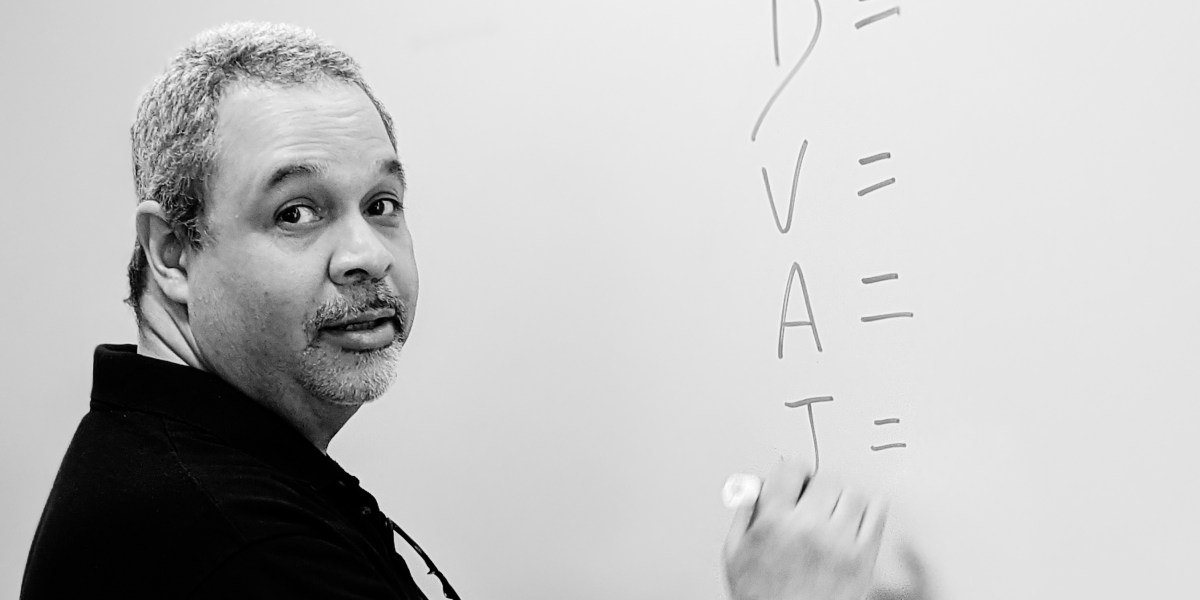Paying it forward: supporting underrepresented students in STEM
Especially for people of color, the road to MIT often begins with advice and encouragement from a teacher or guidance counselor. That was the case for Michael Dixon ’88, who grew up on the South Side of Chicago. He’d long been interested in outer space, reading science texts and science fiction as well as watching PBS’s Nova series on WTTW, Chicago’s public television station. However, the idea that his interests could lead to a profession hadn’t crossed his mind until his public high school’s guidance counselor encouraged him to apply to MIT’s Minority Introduction to Engineering and Science (MITES) program. The six-week summer course is targeted to rising high school seniors from marginalized communities. Dixon was captivated by the curriculum and enjoyed the camaraderie of his fellow students. He applied to MIT and returned the next fall as an undergraduate in physics.
As a Course 8 graduate, Dixon originally considered joining the staff of one of the US national laboratories before earning a PhD. But he felt destined for a different path—one that allowed him to pursue his other interests as well as physics. He also wanted to remain in the Boston area, since his soon-to-be wife, Crystal Camille Dixon ’90, would not be graduating from MIT for two more years.
Dixon found a job as an assistant chaplain at the Brooks School in North Andover, Massachusetts, and began teaching there as well. “I’ve always considered my life to be a faith journey,” he says. In fact, he went on to earn a master’s in divinity at the Gordon Conwell Theological Seminary, and he has been a minister as well as a teacher for the last 20 years. “At Brooks I learned that teaching is my calling,” he says. “As a teacher, I could mentor and support students and pay what I’d received from my teachers forward.” Dixon also earned a PhD in education from Boston College in 2003.
After moving on from Brooks, Dixon taught physics and math at public schools in Newton and then Boston. His goal was to make STEM subjects more appealing to all students, especially Black and brown ones.
In 2005, Dixon got the opportunity to run Dorchester’s Parkside Christian Academy, where he had been teaching. He and Crystal assumed leadership roles at the school, expanding it from K–8 to pre-K through grade 12. They renamed the school Crossfactor Academy; Dixon served as both a STEM teacher and head of school, and Crystal served as director of administration. They also enrolled their six sons. “The goal was to create a space where students of color would be encouraged and expected to succeed in STEM coursework because the proper scaffolding and rigor would be available to them at every grade level,” he says. “On each and every test score, [Crossfactor students] exceeded expectations outsiders had for them.”
Crossfactor Academy shut down in 2018, primarily for financial reasons. “It was a great run,” Dixon says. “I know we made a difference in the lives of these kids and their families. That was the hardest part of shutting down—the students and their families.”
Dixon continues to work toward bolstering education through various efforts both inside and outside of the classroom, including founding the STEM committee of Black Alumni of MIT (BAMIT), which leads BAMIT’s efforts to expand K–12 STEM education for students of color. He also now teaches in the Boston Public Schools at the Dearborn STEM Academy. “We celebrate Pi Day in my classroom,” he says. “I’m committed to being that teacher who advises and encourages kids of color to pursue careers in the science, math, and engineering fields. That won’t ever change. My teachers did the same for me.”




